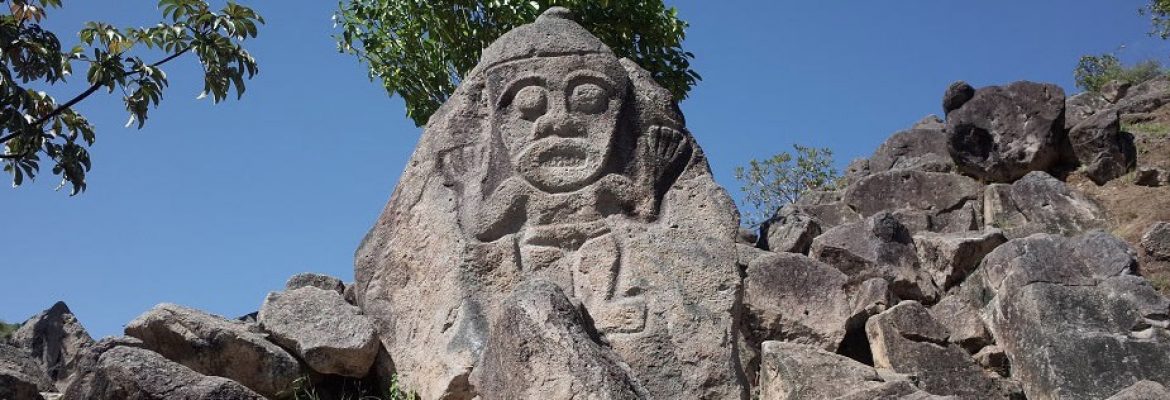Five thousand years ago, two indigenous cultures lived in the adjacent river valleys of the Magdalena and the Cauca. Divided by uncrossable peaks, the rivers were their highways, and here, near San Agustín, within several days’ march of each other, lie the headwaters of both rivers. It is here that those two civilizations met to trade, to worship, and to bury their dead.
The volcanic rocks thrown great distances by the now-extinct nearby volcanoes proved irresistible to the local sculptors, who set about working them into grand monuments. The result is more than 500 statues (the largest is 7m high) scattered over a wide area in the lush green hills surrounding San Agustín. Many of them are anthropomorphic figures, some realistic, others resembling masked monsters. There are also sculptures depicting sacred animals such as the eagle, jaguar and frog. Archaeologists have also uncovered a great deal of pottery, but very little in the way of gold – unlike the Tayrona on the Caribbean coast, these people had no gold to mine.
Little else is known about the peoples of San Agustín. They didn’t have a written language and had disappeared many centuries before the Europeans arrived. But their legacy is one of the most important archaeological sights on the continent – a mystical place in a spectacular landscape that is well worth making a detour for.


